The fourth quarter is often a busy time of year for regulators as they work to make good on their commitments and proposals. This month, the big news is the finalization of the Toxic Substances Control Act (TSCA) reporting rule. In this edition of PFAS News and Views, we highlight that rule as well as some other actions worth noting.
Final TSCA Ruling Published
On October 11, 2023, the EPA published its final rule on PFAS reporting under the TSCA. The final rule covers 1,462 PFAS, so just a bit more than was expected based on the original proposal. However, the number of entities estimated to be impacted ballooned from 234 to more than 130,000.
Figuring out who is and isn’t required to report can be complicated. As noted by many legal commentators, there were no exemptions for small businesses, although they were given an additional six months to report. In addition, those that import articles that contain PFAS, e.g., consumer goods, are required to report under the final rule. One legal firm issued a client alert that does a fairly thorough job discussing the reporting requirements for importers and users of PFAS.
The Pace® PFAS team is closely watching the analysis of this new ruling and talking with our customers to learn more about how it will impact them. This rule is focused on reporting data the EPA expects entities to know, but we are actively assessing whether our PFAS testing services for consumer goods and related products can help with compliance. You can stay informed of our findings by subscribing to our blog.
EPA Removes Low Volume Exemptions Under TRI
The finalized TSCA rule removed all LVEs (Low Volume Exemptions) for PFAS, so it’s no surprise that less than two weeks after publication, the EPA also removed the de minimus exemptions under TRI (Toxic Release Inventory). Unlike the TSCA rule that applies to 1,462 PFAS, the TRI rule only applies to the 189 PFAS covered by TRI.
California Means Business on PFAS in Food Packaging
.png?width=377&height=377&name=food%20containers%20(1).png) On October 17, California’s Attorney General issued an enforcement advisory to manufacturers, distributors, and sellers of food packaging and cookware, alerting them to their obligations under AB 1200. The law, which went into effect on January 31, 2023, prohibits the manufacture, distribution, sale, and offer for sale of plant-based (paper) food packaging that contains PFAS. It might be worth noting that the portion of the bill related to food packing omits the word “intentionally” when referring to added PFAS. This is a significant departure from the approach taken by most other state bans on PFAS in food packaging.
On October 17, California’s Attorney General issued an enforcement advisory to manufacturers, distributors, and sellers of food packaging and cookware, alerting them to their obligations under AB 1200. The law, which went into effect on January 31, 2023, prohibits the manufacture, distribution, sale, and offer for sale of plant-based (paper) food packaging that contains PFAS. It might be worth noting that the portion of the bill related to food packing omits the word “intentionally” when referring to added PFAS. This is a significant departure from the approach taken by most other state bans on PFAS in food packaging.
Pace® Announces Immediate Availability of ATSM D8421 / EPA 8327
Pace® is excited to announce the addition of ASTM D8421 / EPA 8327 to our PFAS test methods portfolio. This method will provide our customers with faster, more affordable testing for PFAS in liquid and solid matrices. To learn more, join us at our upcoming webinar: A Deep Dive Into ASTM D8421 / EPA 8327.
EPA Administrator Warns Companies That “Profit from PFAS”
A few news sites have reported on a recent speech by EPA Assistant Administrator David Uhlmann to the American Bar Association’s Section of Environment, Energy, and Resources. Uhlmann was quoted as saying, “We do intend to focus on the companies that the evidence suggests are the ones most responsible for causing the problem in the United States. That begins with PFAS manufacturers, and they know who they are. That includes companies that have profited… from the use of PFAS in their products.” Uhlmann also said that he expects the regulatory scheme to emerge in the first half of 2024 and for PFAS to be one of the OECA’s (Office of Enforcement and Compliance Assurance) prime targets in the years to come.
Consumer Products Safety Commission (CPSC) Eyes PFAS Protections
On September 29, the CPSC issued a memo calling for scientists, researchers, and members of the public to submit comments to “help CPSC find a comprehensive solution to the hazards posed by PFAS in consumer products.” This Request for Information could signal the CPSC’s intent to add PFAS controls to its portfolio of consumer product protections.
Q4 Watch Alerts
As we near the end of 2023, we’re on high alert for several potential actions the EPA could take. The most notable is the finalization of the proposed National Primary Drinking Water Regulations (NPDWR). The agency has said they anticipate releasing the final rule before the end of the year.
We are also watching for a final rule on the designation of PFOA and PFOS as hazardous substances under the Comprehensive Environmental Response, Compensation, and Liability Act (CERCLA). Originally, this rule was expected to be finalized in August. Then, in June, the public comment period was extended to August 11 and the finalization timeline to February 2024. The speculation is that the final rule was delayed to give the EPA time to complete the Regulatory Impact Analysis (RIA) required of all “economically significant” rules.
While the EPA probably won’t publish anything before the end of the year, we’re still keeping an eye on the CERCLA designation. Once finalized, the rule is likely to spark numerous discussions with our customers. We’ll be ready!




.png)